实例介绍
【实例简介】Digital Design With an Introduction to the Verilog HDL, VHDL, and SystemVerilog
【实例截图】

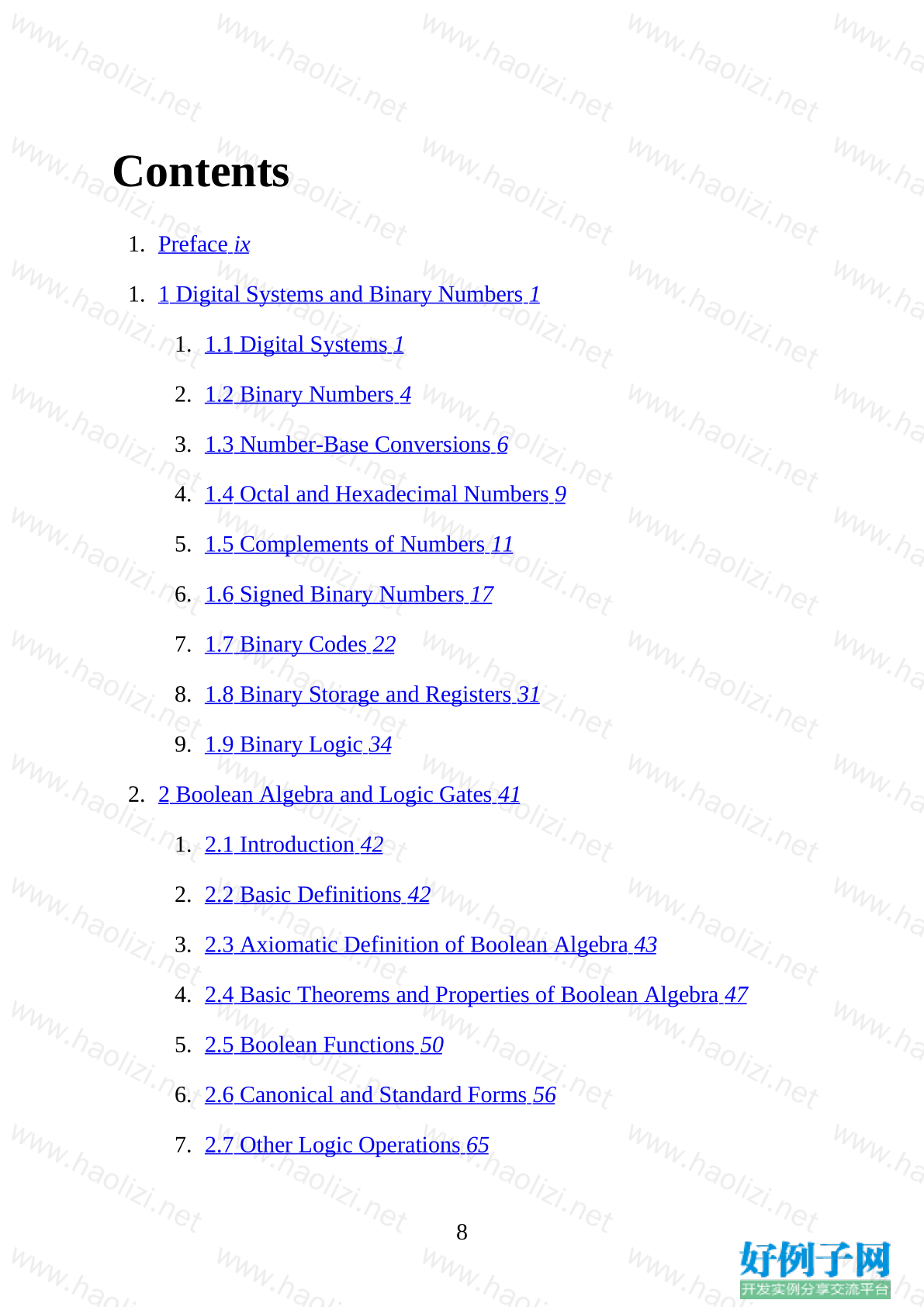
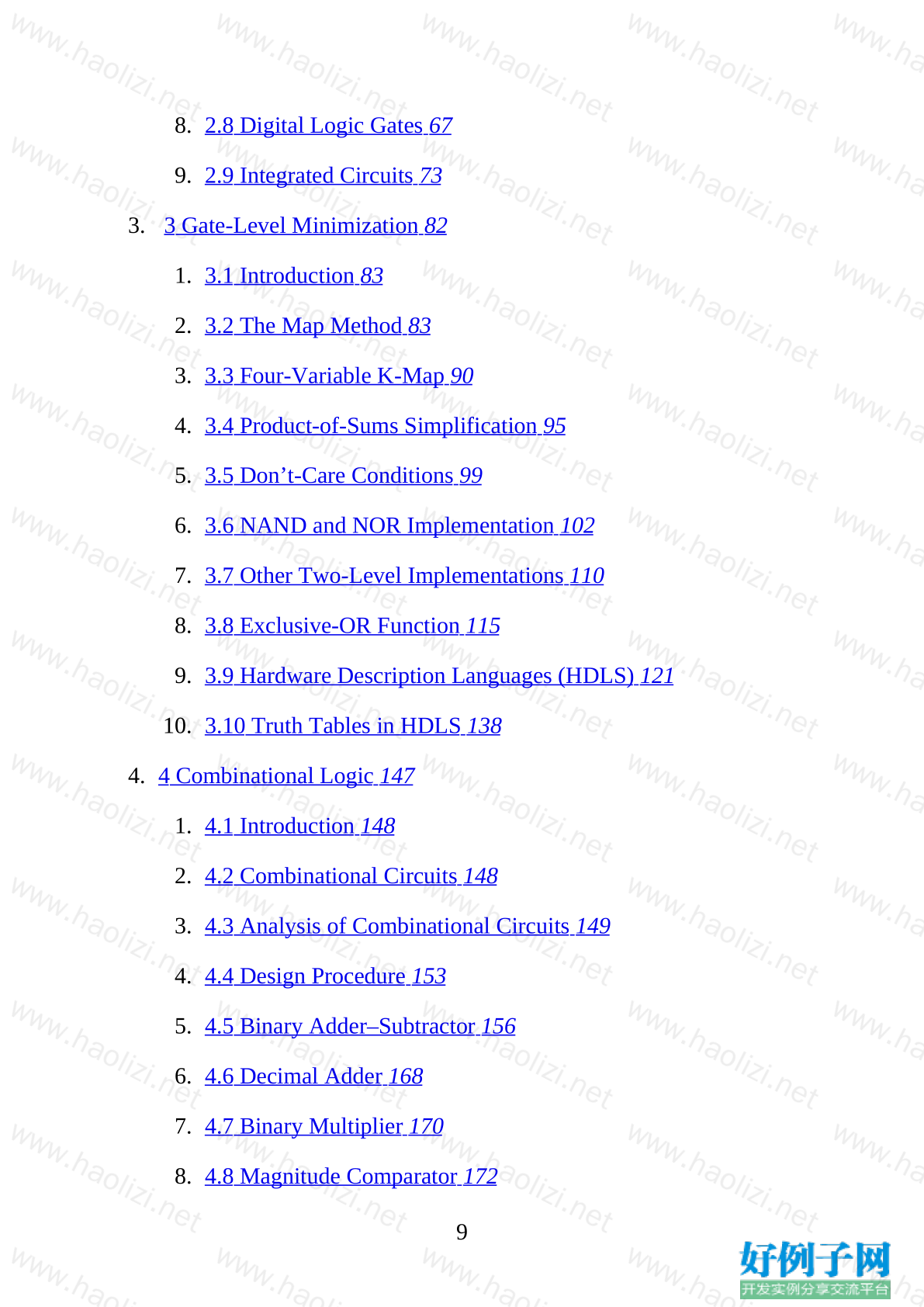

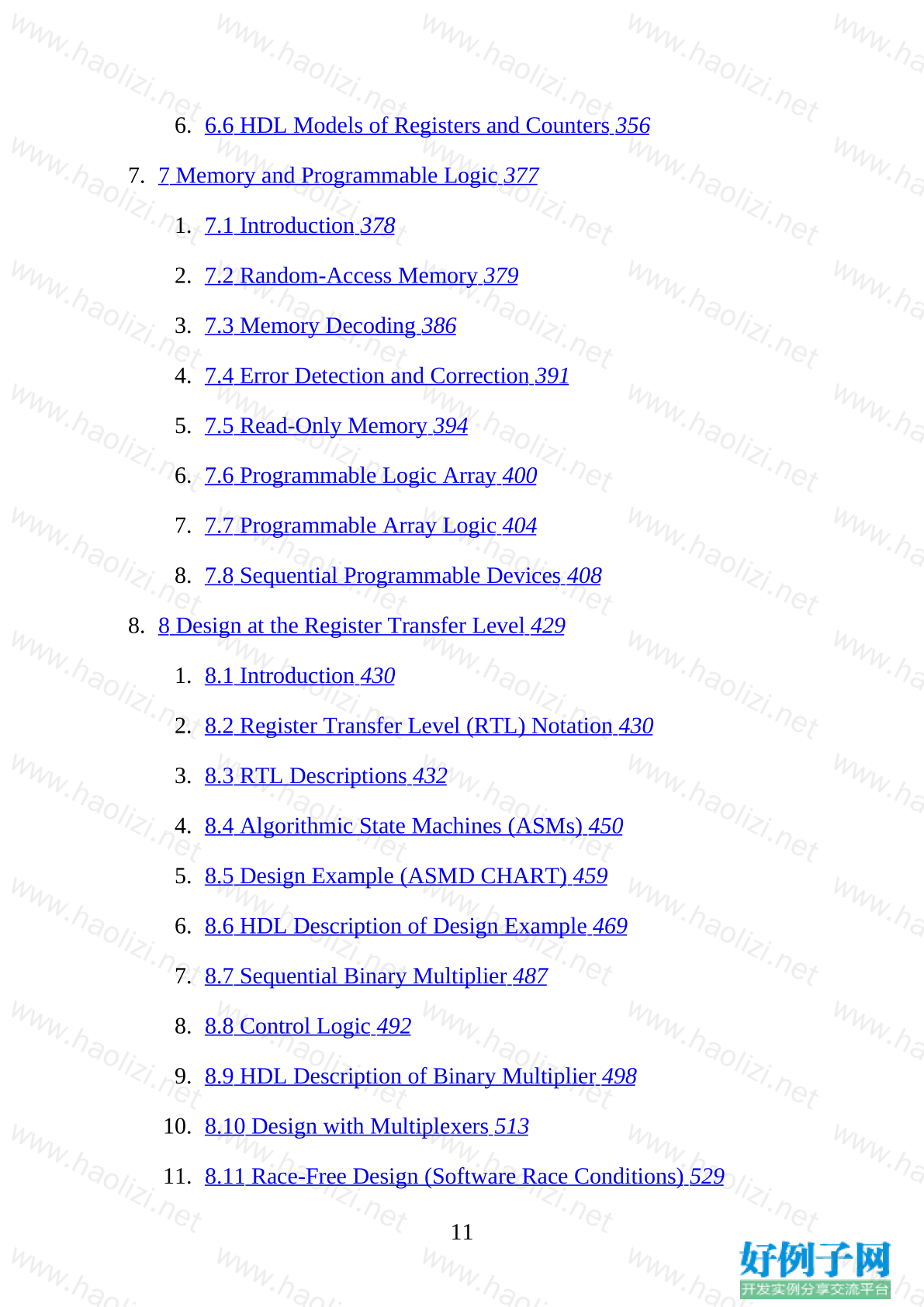
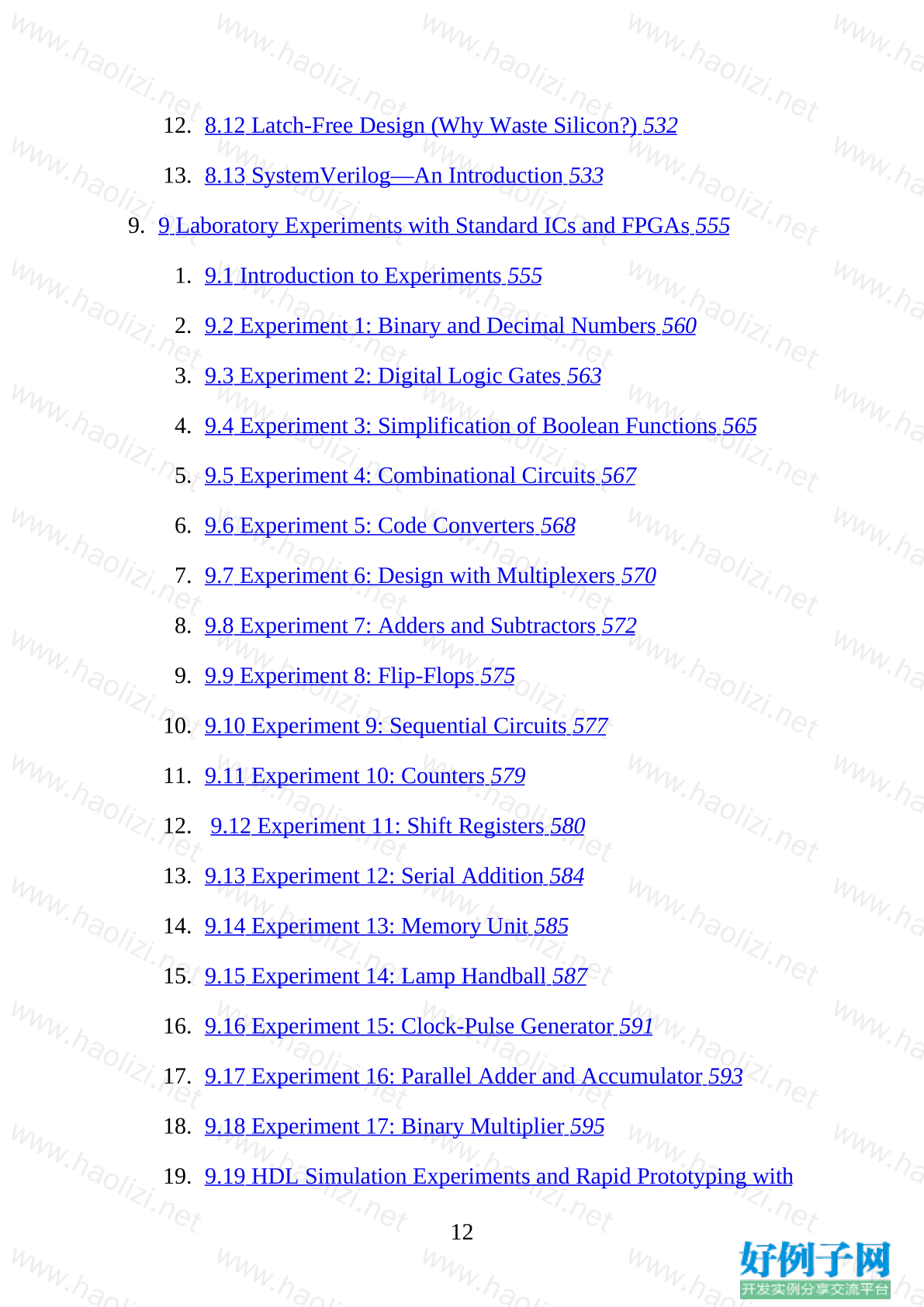
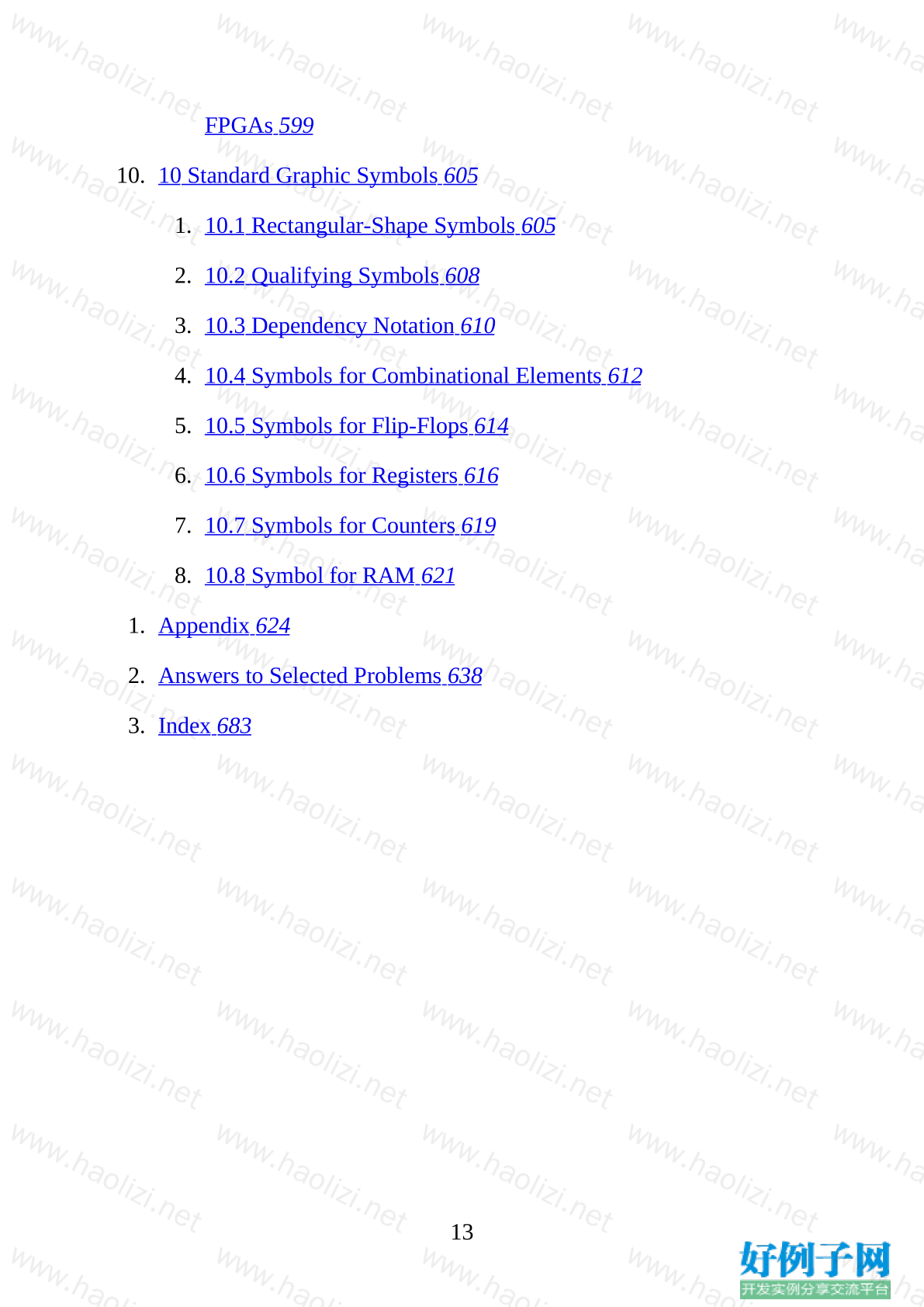


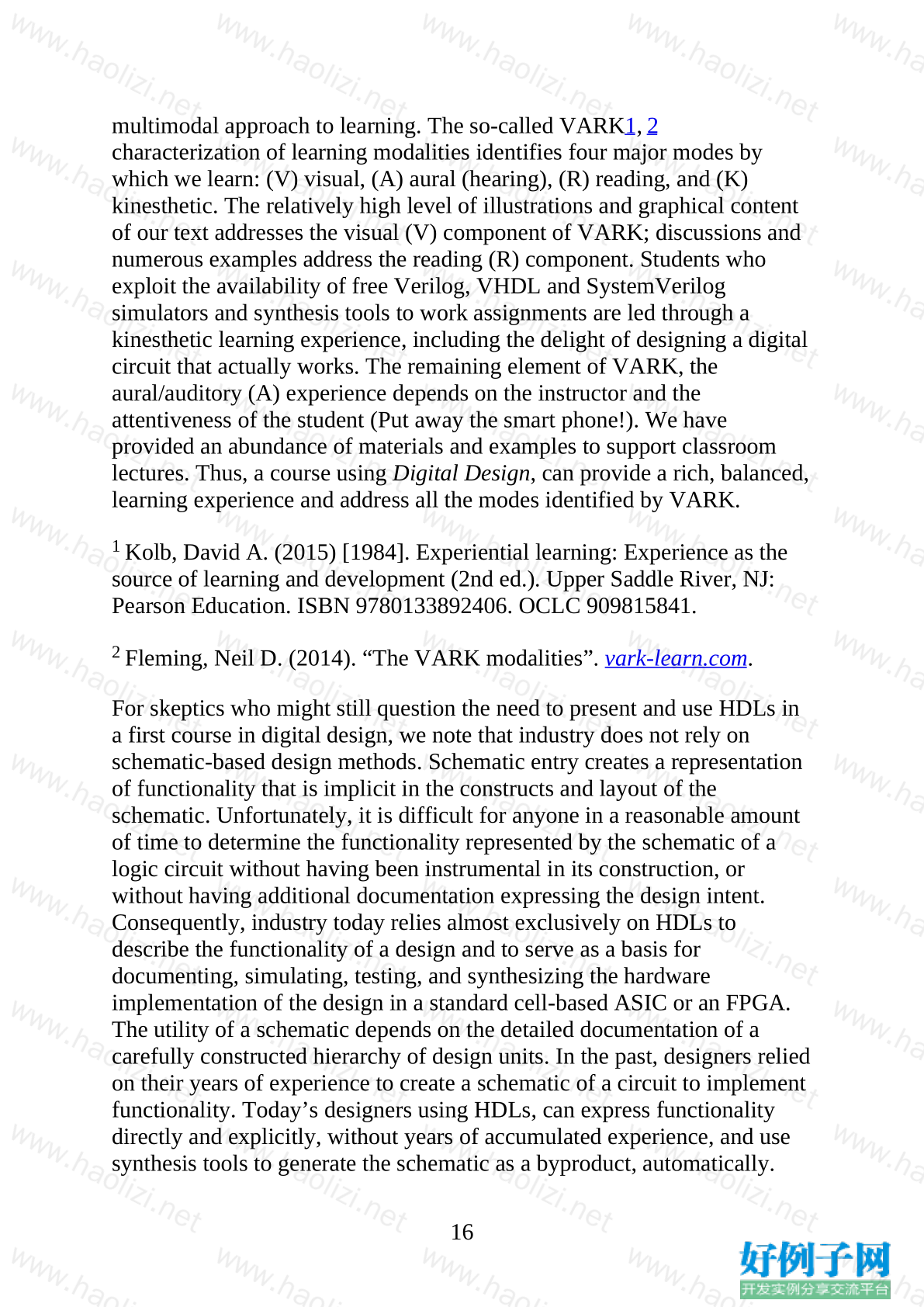
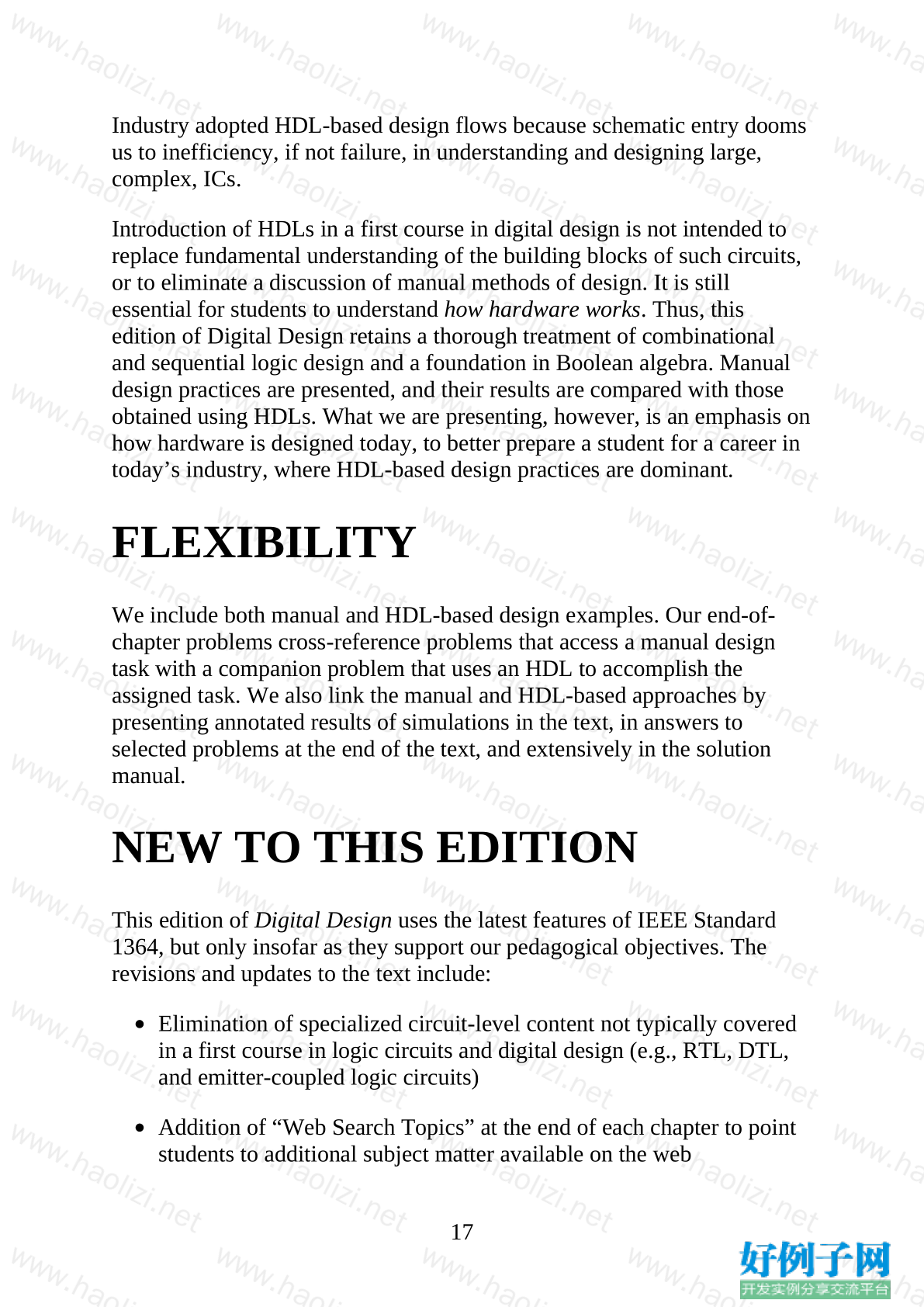
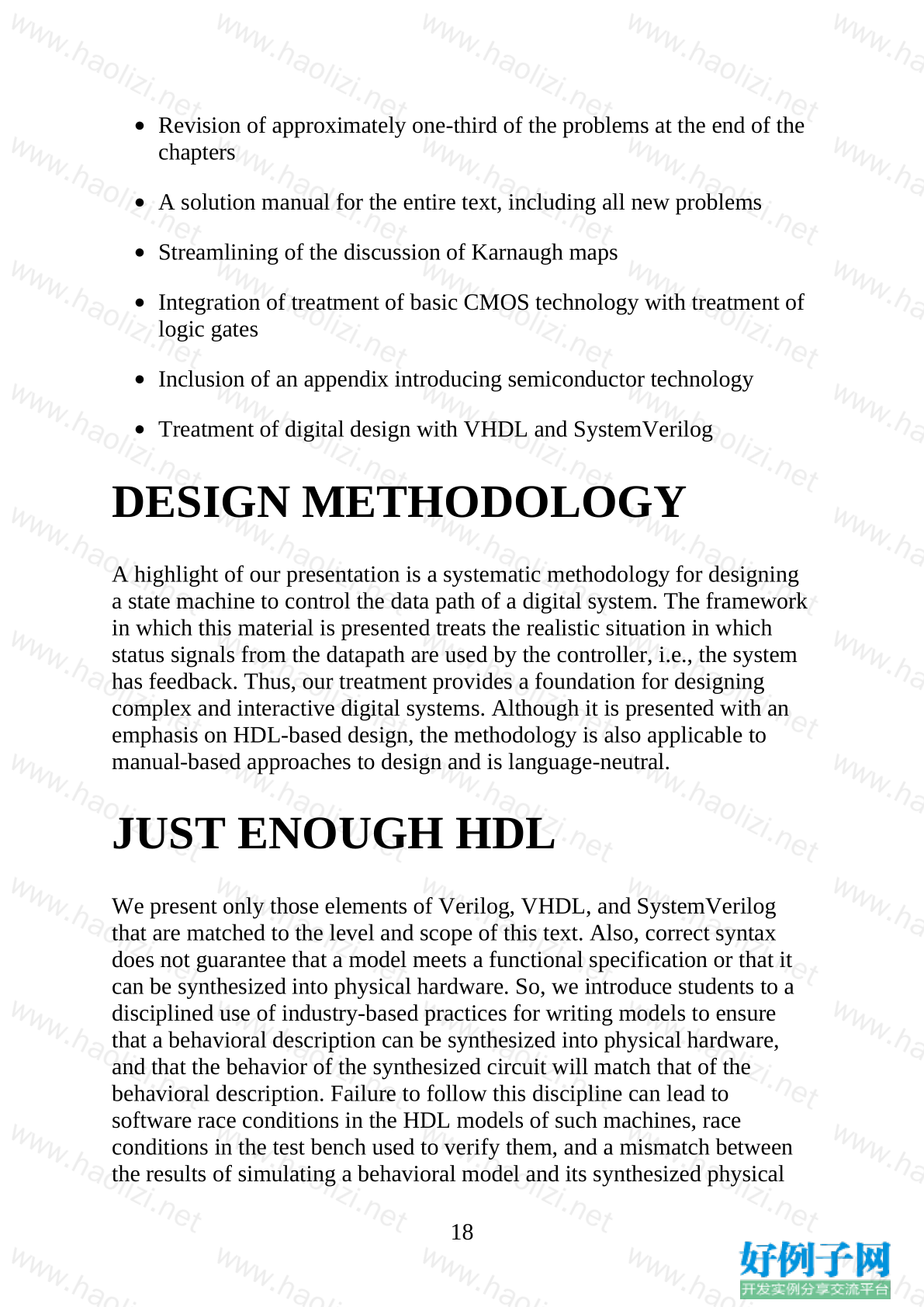
【核心代码】
Contents
1. Preface ix
1. 1 Digital Systems and Binary Numbers 1
1. 1.1 Digital Systems 1
2. 1.2 Binary Numbers 4
3. 1.3 Number-Base Conversions 6
4. 1.4 Octal and Hexadecimal Numbers 9
5. 1.5 Complements of Numbers 11
6. 1.6 Signed Binary Numbers 17
7. 1.7 Binary Codes 22
8. 1.8 Binary Storage and Registers 31
9. 1.9 Binary Logic 34
2. 2 Boolean Algebra and Logic Gates 41
1. 2.1 Introduction 42
2. 2.2 Basic Definitions 42
3. 2.3 Axiomatic Definition of Boolean Algebra 43
4. 2.4 Basic Theorems and Properties of Boolean Algebra 47
5. 2.5 Boolean Functions 50
6. 2.6 Canonical and Standard Forms 56
7. 2.7 Other Logic Operations 65
8
8. 2.8 Digital Logic Gates 67
9. 2.9 Integrated Circuits 73
3. 3 Gate-Level Minimization 82
1. 3.1 Introduction 83
2. 3.2 The Map Method 83
3. 3.3 Four-Variable K-Map 90
4. 3.4 Product-of-Sums Simplification 95
5. 3.5 Don’t-Care Conditions 99
6. 3.6 NAND and NOR Implementation 102
7. 3.7 Other Two-Level Implementations 110
8. 3.8 Exclusive-OR Function 115
9. 3.9 Hardware Description Languages (HDLS) 121
10. 3.10 Truth Tables in HDLS 138
4. 4 Combinational Logic 147
1. 4.1 Introduction 148
2. 4.2 Combinational Circuits 148
3. 4.3 Analysis of Combinational Circuits 149
4. 4.4 Design Procedure 153
5. 4.5 Binary Adder–Subtractor 156
6. 4.6 Decimal Adder 168
7. 4.7 Binary Multiplier 170
8. 4.8 Magnitude Comparator 172
9
9. 4.9 Decoders 175
10. 4.10 Encoders 179
11. 4.11 Multiplexers 182
12. 4.12 HDL Models of Combinational Circuits 189
13. 4.13 Behavioral Modeling 215
14. 4.14 Writing a Simple Testbench 223
15. 4.15 Logic Simulation 229
5. 5 Synchronous Sequential Logic 245
1. 5.1 Introduction 246
2. 5.2 Sequential Circuits 246
3. 5.3 Storage Elements: Latches 248
4. 5.4 Storage Elements: Flip-Flops 253
5. 5.5 Analysis of Clocked Sequential Circuits 261
6. 5.6 Synthesizable HDL Models of Sequential Circuits 275
7. 5.7 State Reduction and Assignment 300
8. 5.8 Design Procedure 305
6. 6 Registers and Counters 326
1. 6.1 Registers 326
2. 6.2 Shift Registers 330
3. 6.3 Ripple Counters 338
4. 6.4 Synchronous Counters 343
5. 6.5 Other Counters 351
10
6. 6.6 HDL Models of Registers and Counters 356
7. 7 Memory and Programmable Logic 377
1. 7.1 Introduction 378
2. 7.2 Random-Access Memory 379
3. 7.3 Memory Decoding 386
4. 7.4 Error Detection and Correction 391
5. 7.5 Read-Only Memory 394
6. 7.6 Programmable Logic Array 400
7. 7.7 Programmable Array Logic 404
8. 7.8 Sequential Programmable Devices 408
8. 8 Design at the Register Transfer Level 429
1. 8.1 Introduction 430
2. 8.2 Register Transfer Level (RTL) Notation 430
3. 8.3 RTL Descriptions 432
4. 8.4 Algorithmic State Machines (ASMs) 450
5. 8.5 Design Example (ASMD CHART) 459
6. 8.6 HDL Description of Design Example 469
7. 8.7 Sequential Binary Multiplier 487
8. 8.8 Control Logic 492
9. 8.9 HDL Description of Binary Multiplier 498
10. 8.10 Design with Multiplexers 513
11. 8.11 Race-Free Design (Software Race Conditions) 529
11
12. 8.12 Latch-Free Design (Why Waste Silicon?) 532
13. 8.13 SystemVerilog—An Introduction 533
9. 9 Laboratory Experiments with Standard ICs and FPGAs 555
1. 9.1 Introduction to Experiments 555
2. 9.2 Experiment 1: Binary and Decimal Numbers 560
3. 9.3 Experiment 2: Digital Logic Gates 563
4. 9.4 Experiment 3: Simplification of Boolean Functions 565
5. 9.5 Experiment 4: Combinational Circuits 567
6. 9.6 Experiment 5: Code Converters 568
7. 9.7 Experiment 6: Design with Multiplexers 570
8. 9.8 Experiment 7: Adders and Subtractors 572
9. 9.9 Experiment 8: Flip-Flops 575
10. 9.10 Experiment 9: Sequential Circuits 577
11. 9.11 Experiment 10: Counters 579
12. 9.12 Experiment 11: Shift Registers 580
13. 9.13 Experiment 12: Serial Addition 584
14. 9.14 Experiment 13: Memory Unit 585
15. 9.15 Experiment 14: Lamp Handball 587
16. 9.16 Experiment 15: Clock-Pulse Generator 591
17. 9.17 Experiment 16: Parallel Adder and Accumulator 593
18. 9.18 Experiment 17: Binary Multiplier 595
19. 9.19 HDL Simulation Experiments and Rapid Prototyping with
12
FPGAs 599
10. 10 Standard Graphic Symbols 605
1. 10.1 Rectangular-Shape Symbols 605
2. 10.2 Qualifying Symbols 608
3. 10.3 Dependency Notation 610
4. 10.4 Symbols for Combinational Elements 612
5. 10.5 Symbols for Flip-Flops 614
6. 10.6 Symbols for Registers 616
7. 10.7 Symbols for Counters 619
8. 10.8 Symbol for RAM 621
1. Appendix 624
2. Answers to Selected Problems 638
3. Index 683
Digital Design With an Introduction to the Verilog HDL, VHDL, and SystemVerilog
相关软件
小贴士
感谢您为本站写下的评论,您的评论对其它用户来说具有重要的参考价值,所以请认真填写。
- 类似“顶”、“沙发”之类没有营养的文字,对勤劳贡献的楼主来说是令人沮丧的反馈信息。
- 相信您也不想看到一排文字/表情墙,所以请不要反馈意义不大的重复字符,也请尽量不要纯表情的回复。
- 提问之前请再仔细看一遍楼主的说明,或许是您遗漏了。
- 请勿到处挖坑绊人、招贴广告。既占空间让人厌烦,又没人会搭理,于人于己都无利。
关于好例子网
本站旨在为广大IT学习爱好者提供一个非营利性互相学习交流分享平台。本站所有资源都可以被免费获取学习研究。本站资源来自网友分享,对搜索内容的合法性不具有预见性、识别性、控制性,仅供学习研究,请务必在下载后24小时内给予删除,不得用于其他任何用途,否则后果自负。基于互联网的特殊性,平台无法对用户传输的作品、信息、内容的权属或合法性、安全性、合规性、真实性、科学性、完整权、有效性等进行实质审查;无论平台是否已进行审查,用户均应自行承担因其传输的作品、信息、内容而可能或已经产生的侵权或权属纠纷等法律责任。本站所有资源不代表本站的观点或立场,基于网友分享,根据中国法律《信息网络传播权保护条例》第二十二与二十三条之规定,若资源存在侵权或相关问题请联系本站客服人员,点此联系我们。关于更多版权及免责申明参见 版权及免责申明



网友评论
我要评论